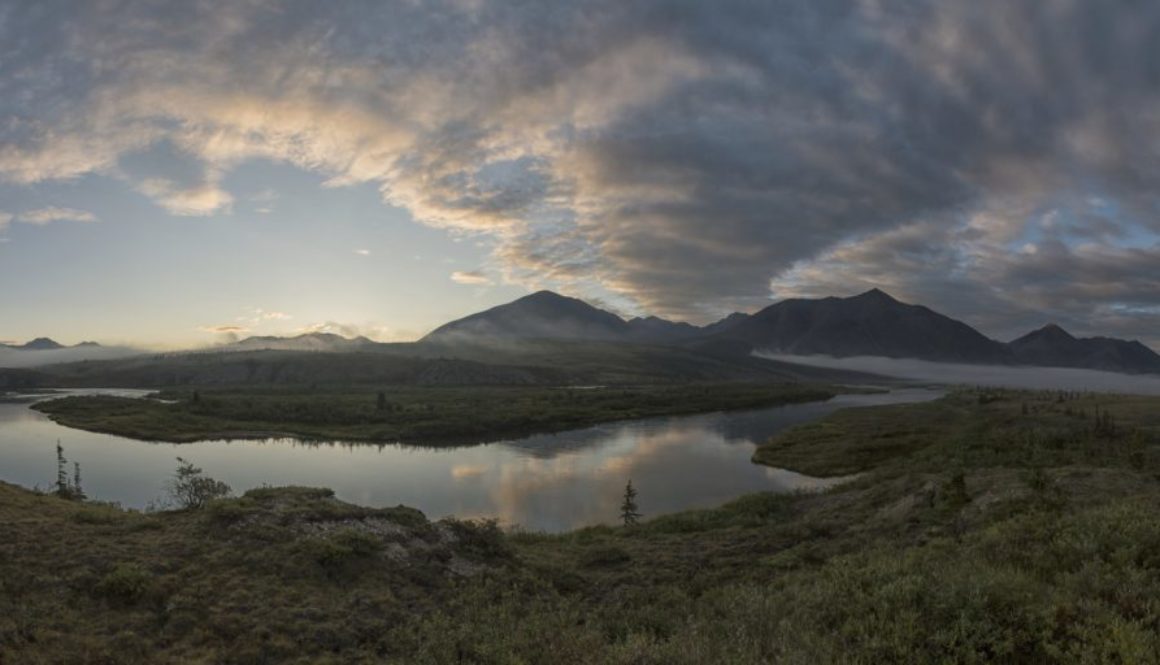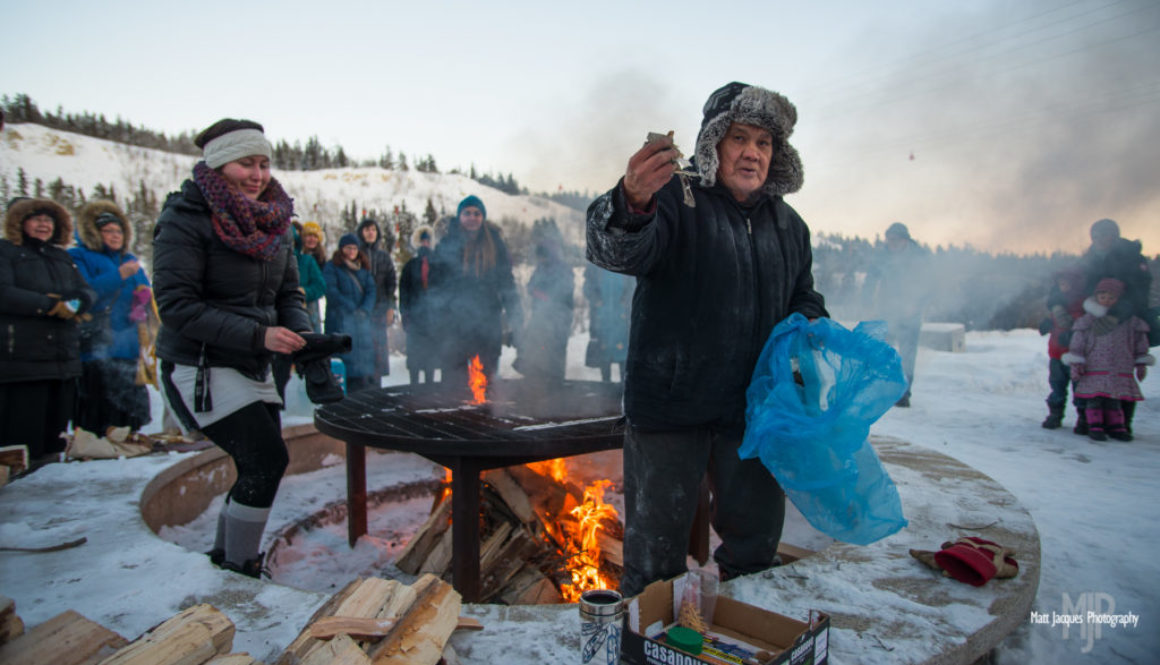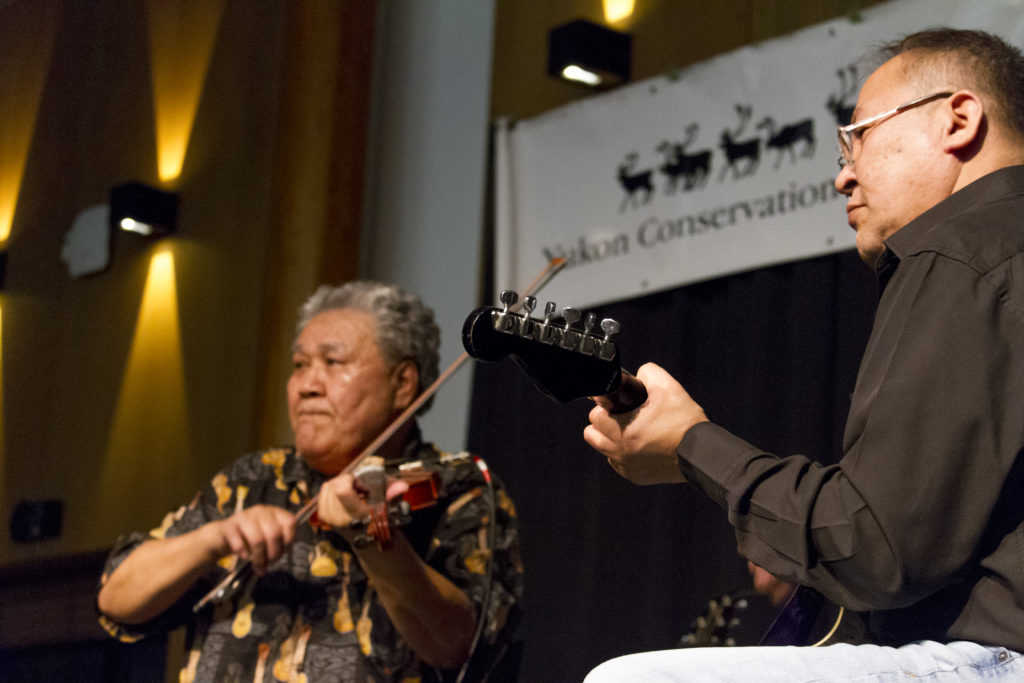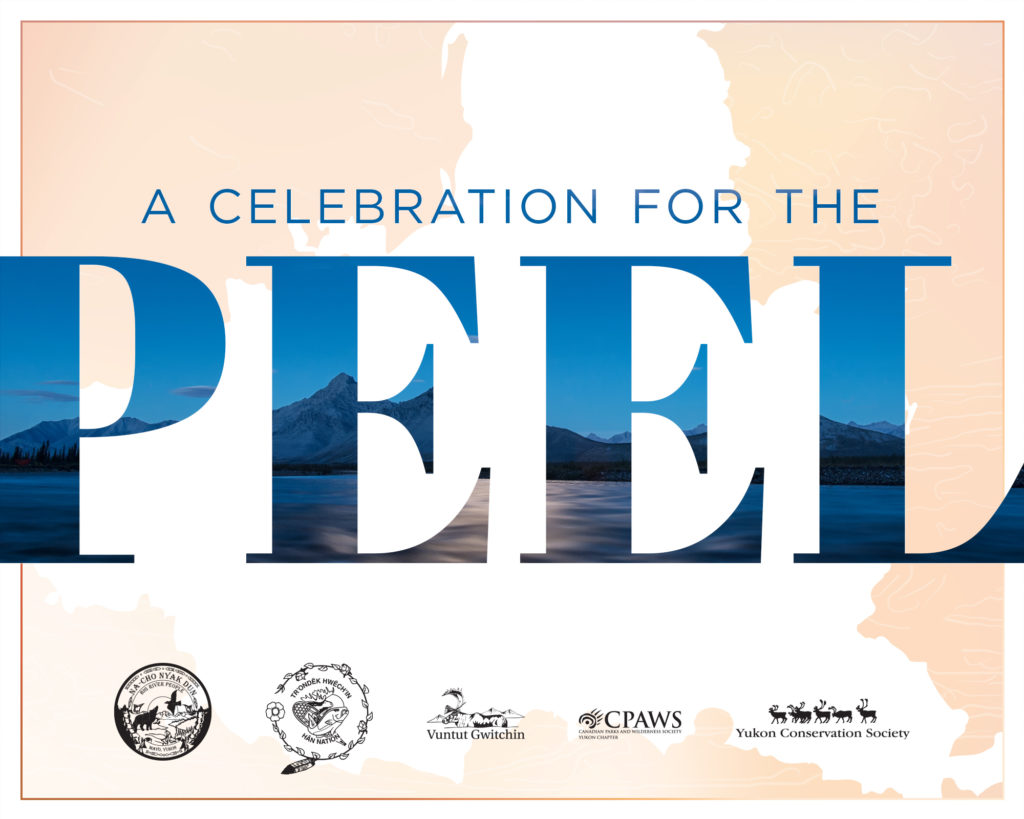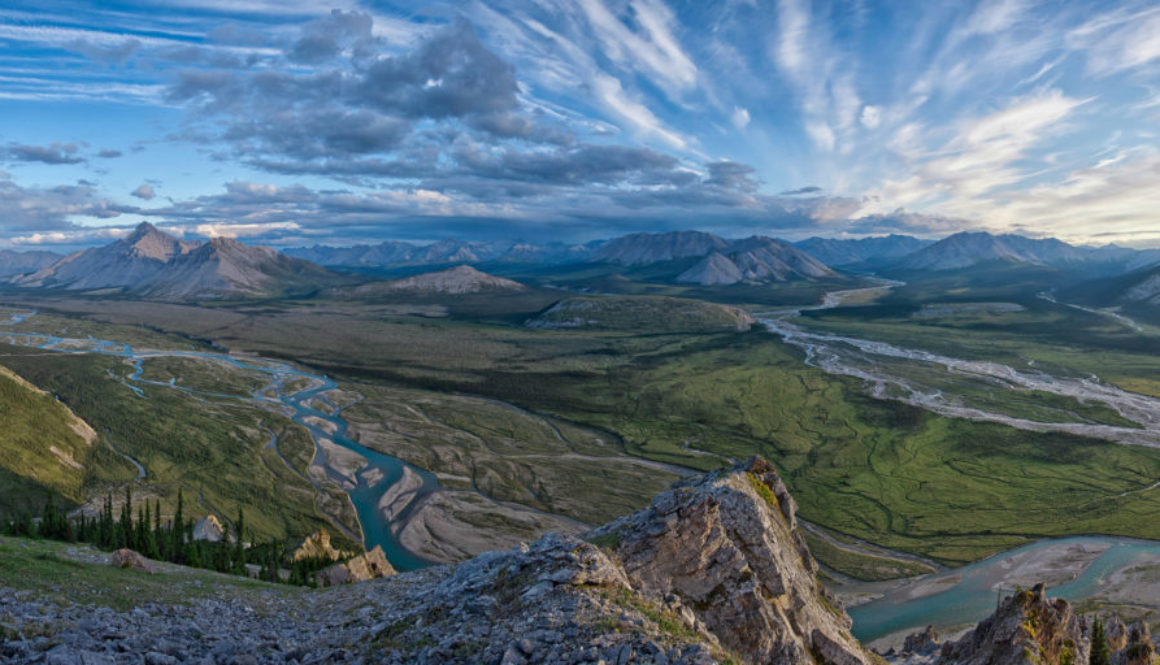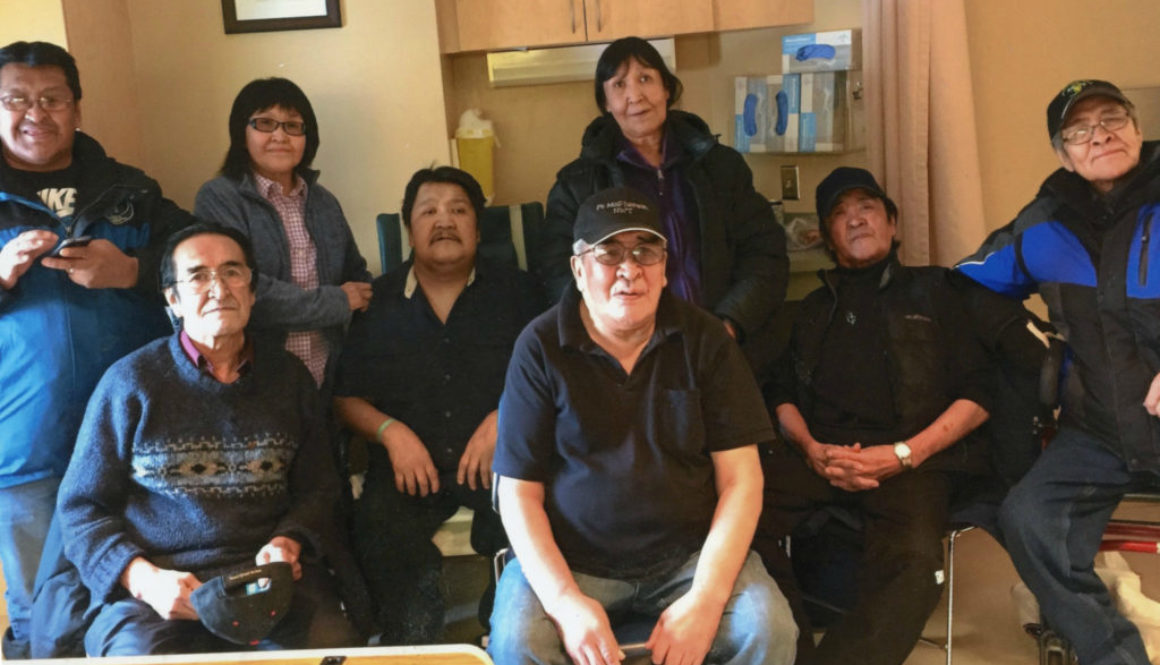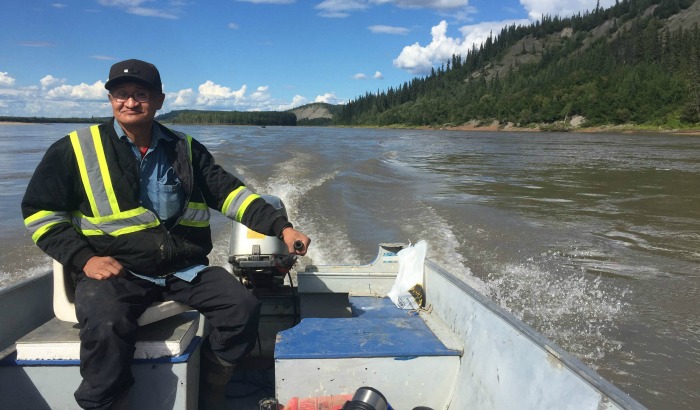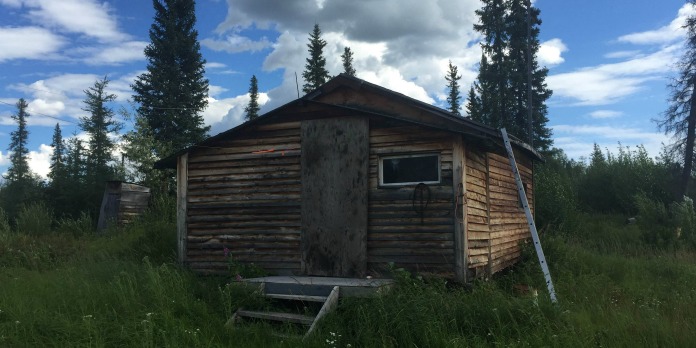Click here to listen to interviews with various people from the Peel delegation in Ottawa.
March 21: The Day Before the Hearing
We’re here in Ottawa for the Supreme Court of Canada case! In total there are about 25 of us with the official delegation from CPAWS, YCS, Tr’ondek Hwech’in, Na Cho Nyak Dan and Vuntut Gwitchin. Tomorrow, more will join us from Mayo, as well as from the Northwest Territories with the Gwich’in Tribal Council, and we’ve been pleased that a few other Yukoners, not part of the official delegation, have made the trip in support.
For some of us, travelling to Ottawa and other major centres in southern Canada for meetings is a regular occurrence, but for others, this is the first time they’ve been to Ottawa since the finalizing of the Umbrella Final Agreement in 1990!
The feeling is very positive and optimistic. Everyone has very strong convictions about why they are here, and for many this is the culmination of decades of advocacy to protect the Peel. Going to the courts was not their first choice; but it was the only option to take care of the land when the land-use planning process was derailed. Speak with most people, especially elders, and you hear a similar refrain: We are protecting the Peel for future generations. We are preserving clean water and a healthy lifestyle for our grandchildren.
Today was a day for everyone to get settled and even see a little bit of the city. We visited the SAW Gallery to check in on the Peel Portrait Exhibition, which opened on Monday, featuring the faces and words of people most deeply connected to the Peel. We’re excited to be hosting a reception at the gallery on Wednesday evening, following the hearing. Some of us were also interviewed by the media today, including ipolitics and CBC. It’s been great to see many media outlets covering the Peel story, including the Walrus, the National Observer and the Globe and Mail. Tomorrow we’re looking forward to more opportunities for all of us here to share our stories about the Peel.
Tomorrow will be busy. We’re beginning the day with a water ceremony hosted by the Algonquin First Nation that commences with a Sacred Fire on Victoria Island and finishes on the steps of the Supreme Court. It will be a very special way to begin a history day and enter the courtroom. Following the hearing, we’ll have a press conference, which we hope to Livestream for people in the Yukon to watch. Then in the evening, we have the reception for the Peel Portrait Gallery (titled: Protecting the Peel Watershed: Voices from Canada’s North).
March 22: The Big Day
More than three years after the legal battle began and 13 years after land use planning began, the Supreme Court of Canada heard the Peel Watershed case today. But the day started even earlier than that, with a water ceremony at 6:30am, as the sun was coming over the horizon. Yukon weather caught up with us, as it dropped from above-freezing the day before to nearly -30C with the windchill on Wednesday morning.
Grandmothers of the Kitigan Zibi Anishnabeg First Nation welcomed and carried out a water ceremony for us, with everyone joining in the Algonquin Water Song and sharing water and berries from their communities. In attendance were Yukon MP Larry Bagnell; Yukon Premier Sandy Silver; Perry Bellegarde, the National Chief of the Assembly of First Nations; and Peter Johnston, the Grand Chief of the Council of Yukon First Nations. It was an extremely powerful and contemplative way to begin the day, with the chiefs reflecting on the struggle we’re enduring to protect the land and water for future generations.
Following the ceremony, we all headed into the Supreme Court of Canada building and were able to take in the surroundings before the lucky few could enter the courtroom. There was such high demand that not everyone could get a seat in the main room, and additional seating had to be added to the overflow room.
Thomas Berger was first up, and he made a series of passionate arguments for why the Government of Yukon should not be granted a do-over. He made sure to reiterate that there is a difference between rights and obligations, and the government’s failure to exercise its rights in the earlier phase of the consultation should not be construed as a breach of the planning process. He maintained that the government derailed the process at the last stage, when it introduced brand new plans and principles for the Peel that had not been put forward earlier. To give the government a second chance to express its views, he argued, would be to reward its misconduct and create uncertainty in land-use planning in the future. Reconciliation also came up in the questioning, with the Government of Yukon lawyers arguing that the best way forward would be to return to the earlier stage so that the government could properly express its views. Berger and the intervenors (CYFN and Gwich’in Tribal Council) made a strong arguments that additional dialogue and process are not always the path to reconciliation. In fact, when a serious violation of treaty obligations has occurred, such as this case, the goal should be to deter such actions in the future.
Following many questions from the bench, the hearing was adjourned at 12:00pm local time, after which point our Peel Watershed delegation gathered for photos in the courtroom, as well as outside with the River of Names of the 7,500 people who participated in the final consultation in support of the commission’s original plan.
We then headed off for a press conference with the Chiefs, conservation groups, and legal team, delayed slightly by the extra security and crowdedness due to the release of the Federal Budget. At the press conference, which was livestreamed on Facebook, the chiefs emphasized that the land is to be shared, stewarded and protected for plants and animals and future generations. “We will always work together for the children of tomorrow,” said Chief Mervyn, quoting Elijah Smith. Chief Joseph spoke about having to go through the justice system to ensure the spirit and intent of their Final Agreements are honoured, and preferring to collaborate with the Yukon Government rather than being adversaries. Yukon Conservation Society spoke about how the Peel court case is challenging the stereotype that the Yukon is only a place of barren land and minerals where you go to ‘get rich quick’. CPAWS spoke about the need to protect remaining wild places as they dwindle around the world, and the deep connection that Canadians feel towards wilderness. “It’s part of our DNA,” said Chris Rider.
After the press conference, interviews were had with the Vancouver Sun, APTN and others and our focus moved towards the official opening of the Peel Portrait Project.
Tonight we hosted two receptions for the portrait gallery – one for the general public and one especially for Yukoners and other guests. Both receptions played to large audiences that were captivated by the set of photographs. Observing the crowd, you could tell that this is not the sort of exhibition that comes to Ottawa very often. We heard from a range of speakers during the receptions, including Tom Berger, who received a standing ovation for his work, and who commented on the continued fight to protect northern environments. The most powerful words from the evening came courtesy of people from Peel communities who were willing to open up about their experiences with the Peel Watershed and how it has shaped their life. We heard from many elders and youth, including Jimmy Johnny, Dana Tizya-Tramm, Bobbi Rose Koe, Robert Alexie, Gladys Netro and Frank Patterson. Nearly every person remarked that clean water is the number one priority. Without water, there is no life.
All of the speeches were recorded via Livestream on Protect the Peel’s Facebook page if you would like to view the recordings.
March 23: The Day After the Hearing
Our final day in Ottawa ended with a panel event at Carleton University. “Indigenous Rights, Conservation, and the Law” featured Thomas Berger, Q.C. (Legal Counsel), Dana Tizya-Tramm (Councilor with Vuntut Gwitchin First Nation), Chief Roberta Joseph (Tr’ondek Hwech’in First Nation), and Christina Macdonald (Executive Director, Yukon Conservation Society). The panel was hosted by CPAWS Yukon, YCS, the School of Public Policy and Administration, and the MacOdrum Library, Carleton University. Frances Abele, Professor in Aboriginal-Canada Relations in the School of Public Policy and Administration, moderated.
Moved to the main Library lobby due to major interest, the panel was attended by about 200 students, faculty, and interested members of the public. Elders and other members of the Watershed delegation were also present. Prior to the panel, we took part in a smudging ceremony in the beautiful Aboriginal Centre at Carleton designed by Douglas Cardinal. Because it was Thomas Berger’s birthday, there was also a birthday cake – and the treat of Happy Birthday sung in Northern Tutchone by Jimmy Johnny!
The panellists gave interesting and inspiring speeches before answering a series of thoughtful questions from the audience. The recording can be viewed on our Facebook page. Thomas Berger explained our legal arguments to the Supreme Court, underscoring that the Government of Yukon should not be granted a do-over on a lengthy, democratic, and consultative process in which it had every opportunity to properly express its views. He also highlighted how the fight to save the Peel Watershed can be seen in bigger context of efforts to ensure indigenous rights and environmental protection in the North. Chief Roberta Joseph spoke to the importance of honouring the Final Agreements and how First Nations would rather not be stuck using the courts to uphold their modern-day treaties. Christina Macdonald talked about how the court case challenges the common stereotype that the Yukon is a place to get rich, where the best use of the land is mining. “The Yukon has people and communities who must be consulted,” said Macdonald. Finally, Dana Tizya-Tramm provided stirring remarks about how the Gwich’in people define themselves based on the environment they come from, and how the functions of the land that have sustained the Gwich’in for millennia cannot be replaced.
The event coincided with the Berger Inquiry Exhibit at Carleton University. In the 1970s, the Mackenzie Valley Pipeline Inquiry was a precedent-setting process for listening to the social and environmental concerns of First Nations regarding resource development when Justice Berger travelling throughout the Yukon and Northwest Territories for community hearings. Berger reflected on how far society has come in the forty years since the inquiry, and how far we still have to go.
After the event, a reception provided by the University was a chance for eager students and other attendees – including some Yukoners currently living and studying in Ottawa – to meet the panellists and other members of the Watershed delegation. The room was filled with the buzz of conversation as old friends reunited and new connections were made.
After the event, most of the delegation took the next flight back to Whitehorse – proud to have been in Ottawa as we made history at the Supreme Court, but eager to return home to the place we are fighting for and the land we love.
Our final opportunity to share the Peel story with the south came in Toronto at the Water Docs Film Festival, where The Peel Project, a documentary about six Canadian artists who travel through the watershed seeking artistic inspiration, was screened on opening night. CPAWS Yukon staff, Jason LaChappelle, participated in the post-film Q&A, sharing updates from the case with the audience of nearly 300 people.

